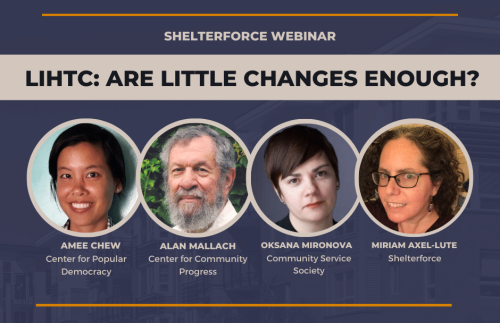
The challenge for policymakers and practitioners is to figure out if the positive impacts of gentrification can be realized while mitigating the negative consequences. A recent NCRC white paper focused on how the Community Reinvestment Act (CRA) can be applied to promote neighborhood integration in communities experiencing gentrification. Despite guidance by the federal bank agencies as to how banks can pursue mixed- income housing and avoid displacing lower-income residents from gentrifying neighborhoods, the role of banks in gentrifying neighborhoods appears to be rarely mentioned in CRA exams.
Research has documented that gentrification has intensified in the largest metropolitan areas of the country. From 2000 to 2010, a majority of the largest metropolitan areas saw rapid growth of young professionals in urban neighborhoods more than in suburban neighborhoods, which was a marked contrast from 1970 through 2000. Moreover, the increase in housing prices near the central business district is driven by full-time educated professionals working 50 hours or more per week. At the same time, lowe-ncome renters experience displacement due to increasing rates and conversions of affordable rental property to upscale condominiums. Recent research also shows that the difficulties of disadvantaged renters with low credit scores is further aggravated as they experience even more decline in their scores as they move to lower-income neighborhoods with limited opportunities.
Meanwhile, residents who remain in gentrifying neighborhoods can benefit from the neighborhood revitalization. I examined this issue for Manna Inc., a nonprofit housing developer and counseling agency that has provided homeownership opportunities for lower-income clients, mostly single African-American mothers, since the 1980s in Washington, D.C. Manna has placed several hundred people in single-family and multi-family units in neighborhoods in the District. A concentration of these homes are located in the Shaw neighborhood, which has experienced gentrification during the last couple of decades. The study found that the Manna homeowners experienced a median equity gain of $170,000. For lower-income families that previously had little or no wealth, this equity allows them to finance education for themselves or their children and will also allow them to pass along some wealth to their children. Other benefits of gentrifying neighborhoods include increases in property tax revenue for cities and a resurgence of business.
Over the years, practitioners and policymakers have developed a number of tools seeking to minimize displacement of people of color and lower-income residents of gentrifying neighborhoods. For example, Low-Income Housing Tax Credits can be used to finance affordable rental housing for lower-income tenants in gentrifying neighborhoods. Community land trusts, in which nonprofit organizations own land and lower-income households buy homes, helps keep the cost of homeownership affordable in gentrifying areas. These tools are most effective when nonprofit organizations dedicated to low-income families like Manna are involved as the lead or key partner in the developments.
CRA can enter the picture in a significant manner if regulatory guidance is applied more vigorously by examiners conducting CRA evaluations and bank rating. A “question and answer” document produced by the banking agencies suggests that financing large-scale middle- and upper-income developments in overheated markets that would result in displacing low- and moderate-income residents of gentrifying neighborhoods would not be considered favorably on CRA exams. In contrast, financing that promotes mixed-income housing in gentrifying neighborhoods would be regarded favorably on CRA exams. In addition, if the bank’s financing and activities are part of a government or nonprofit developed neighborhood plan, the financing and activities would be considered favorably.
The issue, however, is that CRA exams rarely apply this guidance. NCRC’s paper scrutinized CRA exams for 10 large banks in major metropolitan areas that were experiencing gentrification. Our paper could only identify three instances of loans and investments that supported affordable housing and local small businesses in gentrifying neighborhoods. In each of these instances, the exam narrative was sparse and I had to look at newspaper or magazine articles that described neighborhoods receiving the funding as those experiencing gentrification. For CRA to be more effective in promoting integration and preventing displacement, more robust analysis, discussion, and ratings need to steer bank loans and investments in a pro-integrative manner.
CRA examiners can also consider whether banks are working with local jurisdictions that are implementing their new Department of Housing and Urban Development required Assessment of Fair Housing (AFH) plans that are supposed to describe how segregation is being combated. One approach that can be incorporated in AFH plans is whether banks are financing affordable housing and small business development for lower-income residents in gentrifying neighborhoods.
Nonprofit organizations and local public agencies must be vigilant and hold CRA examiners accountable for considering whether bank financing is promoting integration and preventing displacement in gentrifying neighborhoods. It is time to elevate these issues on CRA exams.
Image: Belmont Dairy mixed-income townhomes in Portland, Oregon. By Brett VA, via flickr, CC BY 2.0)






Thanks for this one. Is it possible to use actual city metrics & profiles as opposed to “metro” metrics, to better understand what is going on in the city itself? Or, use metro data but include actual city data as well.
For example, my “metro” area of San Antonio-New Braunfels, involves 8 surrounding counties (mostly rural), encompassing 7,400 sq. mi. Of what value is there to read regional statistics or metrics when I want to understand my city’s metrics?
Yes, data sets are collected & reported in this manner, which has value to regional statisticians, economists or academics, but for the rest of us “in the field”, we need actual city data. Thanks.
Thanks for the comment. Yes, by all means, metrics can be citywide, not regional or metro wide. See the link to the study I did for Manna. It was focused on the District of Columbia only and did not include counties in MD or VA.
Your article states that increasing home values in gentrifying neighborhoods can bring big equity gains to low income homeowners who can then use that to finance education. Do we have any data on the extent to which that’s actually possible? If household income has remained flat, and low income owners are already at the high end of debt/income ratios, how can they tap into that equity? How easy is it for them to borrow against that housing wealth if they don’t have sufficient income for additional debt service payments?
Thanks for the comment. Regarding equity, my experience is with Manna and research I did concerning their homeowners. I can testify that if done carefully, low- and moderate-income homeowners like Manna’s can realize equity gains. I have also had the pleasure of meeting a number of them. Data on a national level remains limited so more survey research, perhaps working with other local nonprofits would be useful.